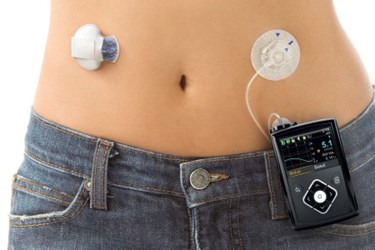Clinicians Call For More Transparency From Manufacturers Of Insulin Pumps
By Jof Enriquez,
Follow me on Twitter @jofenriq

Two prominent diabetes groups recently urged device manufacturers to share more information on adverse events related to insulin pumps. The groups also called on regulatory agencies to apply a more thorough and transparent system of reporting insulin pump device safety.
The American Diabetes Association (ADA) and the European Association for the Study of Diabetes (EASD) recently published a joint statement claiming that relevant information held by device manufacturers about the long-term, real-world safety records of market-approved insulin pumps are not adequately shared with clinicians.
“Technology is evolving rapidly for treating diabetes,” Anne Peters, MD, director of the University of Southern California Clinical Diabetes Program and co-author of the statement, said in an ADA press release.
“While that’s certainly a good thing, we don’t have very good post-marketing surveillance for devices such as insulin pumps, particularly in Europe where manufacturers often introduce products prior to releasing them in the United States,” Peters said. “We need to make sure we have sufficient data about how the devices are working once they hit the market, so that we can support patients by helping them understand how to prevent errors in using them.”
According to Reuters, mechanisms are in place in the United States to allow insulin pump users to report adverse events to manufacturers, who in turn report them to the FDA. The agency makes the data publicly available, but each company uses its own review and categorization procedure and has discretion over whether to report a pattern of safety concerns.
The authors of the ADA/EASD statement explained that adverse events stored on the FDA’s Manufacturer and User Facility Device Experience (MAUDE) database is currently underutilized, while the European Databank on Medical Devices (EUDAMED) is not publicly accessible. They expressed the urgent need to make these databases more complementary and accessible for clinicians to guide patients and prevent adverse events.
“It’s really hard for a clinician like myself to access that data,” Peters told Reuters. “How often does a pump fail and need to be replaced? I don’t know.”
In addition to calling for more transparency by manufacturers and regulators, statement co-author John Petrie of the University of Glasgow also encouraged insulin pump users to promptly report failures to manufacturers.
“This will help ensure that any problems, e.g. due to ongoing changes in design and specifications, are detected as early as possible,” Petrie told Reuters.
According to the statement, there were 1,594 adverse events related to insulin pumps documented between 1996 and 2005, including 13 deaths. The number of serious and fatal medical device adverse events increased by about 17 percent per year between 2001 and 2009.
The authors attribute the spike to the parallel increase in diabetes patients using insulin pumps over the last several years. Innovation in insulin pump design and manufacturing techniques has only increased the urgency to track these rapidly evolving devices. In particular, manufacturers are developing artificial pancreas systems, which integrate insulin pump and continuous glucose monitoring (CGM) systems.
“Owing to the speed of innovation, small modifications are made over time to pumps, their associated software/menu systems, and the manufacturing process without undergoing clinical studies or being publicly announced,” the authors wrote. “Manufacturers have to document such changes in both the US and the EU, but these data are not publicly accessible. More transparency would be of help to quantify and understand the impact of such changes on the rates of AE reports and their contents.”
Other recommendations are found in the full text of the report, titled “Insulin Pump Risks and Benefits: A Clinical Appraisal of Pump Safety Standards, Adverse Event Reporting, and Research Needs [PDF],” which was published in the March 2015 issue of the journal Diabetes Care.
